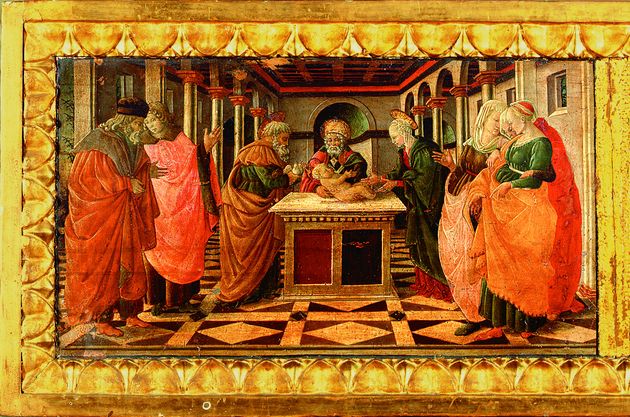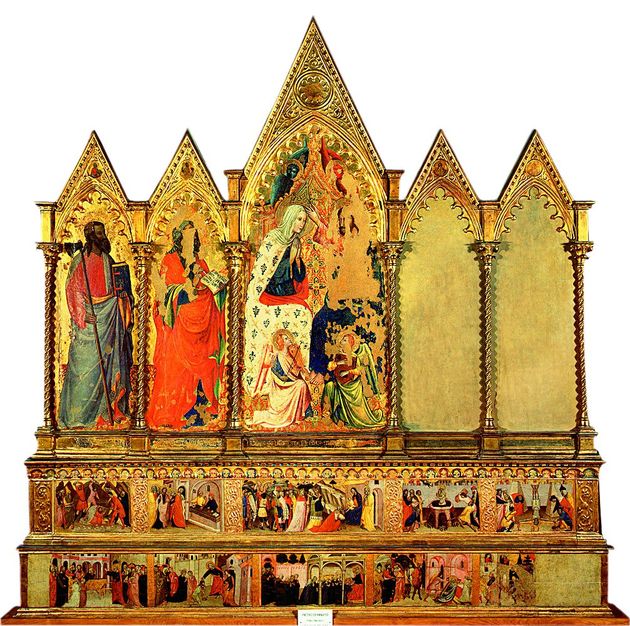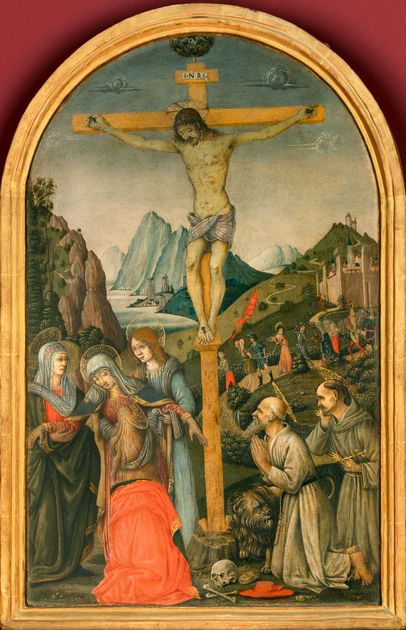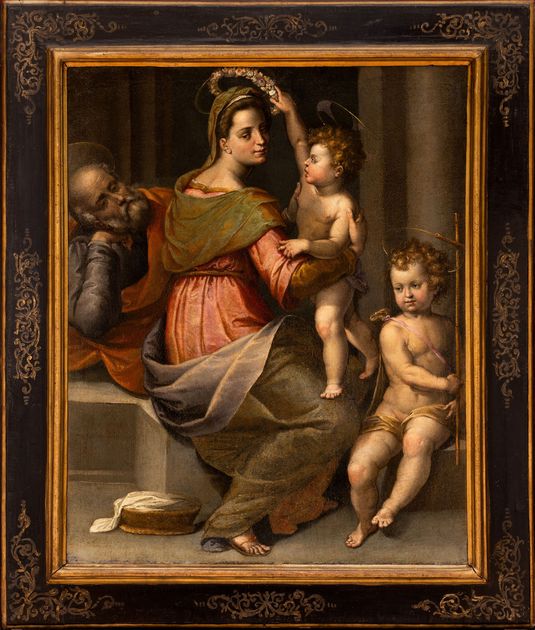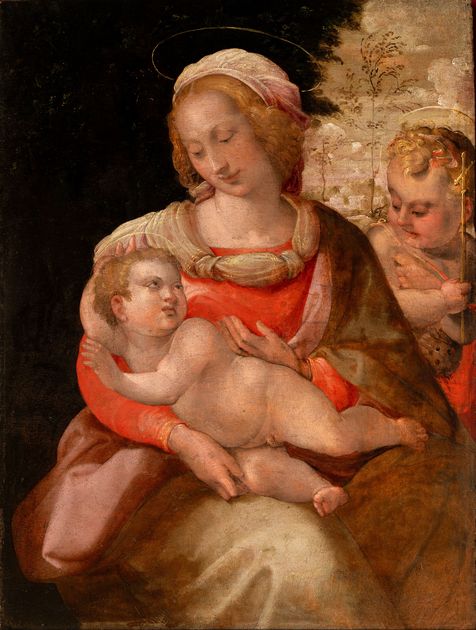Giovanni da Milano occupies a prominent place in 14th-century painting, as forerunner and mediator between the Lombard and Tuscan late Gothic cultures. The splendid polyptych, among the main masterpieces of the museum collection, was commissioned around 1360 for the altar of the “New Pilgrims’ Ward”, the men’s ward of Prato’s hospital Spedale della Misericordia. As we learn from the inscription on the central part, the work was requested by Francesco Tieri, rector of the Spedale and also the donor of the Polyptych previously painted by Bernardo Daddi.
Both the size and the structure of this complex are particularly striking. In the centre is the Madonna with Child, and in the main sections are figures of saints: St. Catherine and St. Bernard (left) and the patron saints of the Spedale, Bartholemew and Barnabas (right). In the predella beneath these, significant episodes from the lives of the saints are described, while the second predella is dedicated to the childhood and Passion of Jesus.
The attention to the most minute details on the one hand enhances the formal modernity and the richness of the exquisitely-crafted fabrics (see for example St. Catherine’s regal gown with jewel buttons and a belt rendered in polychrome enamels); on the other hand with its vivid concreteness it makes the viewer participate more intensely in the cruel, dynamic scenes of martyrdom (note the foreshortened shoulder of the executioner ready to cut off St. Catherine’s head, or the agile practicality of St. Bartholemew’s persecutors as they prepare the torture). Narratively speaking, the continuum of the scenes of St. Barnabas’ martyrdom is daringly inventive: while the saint burns at the stake, two partly cut-off male figures walk away from the bloody scene, creating an unusual, powerfully dramatic long-shot effect.










